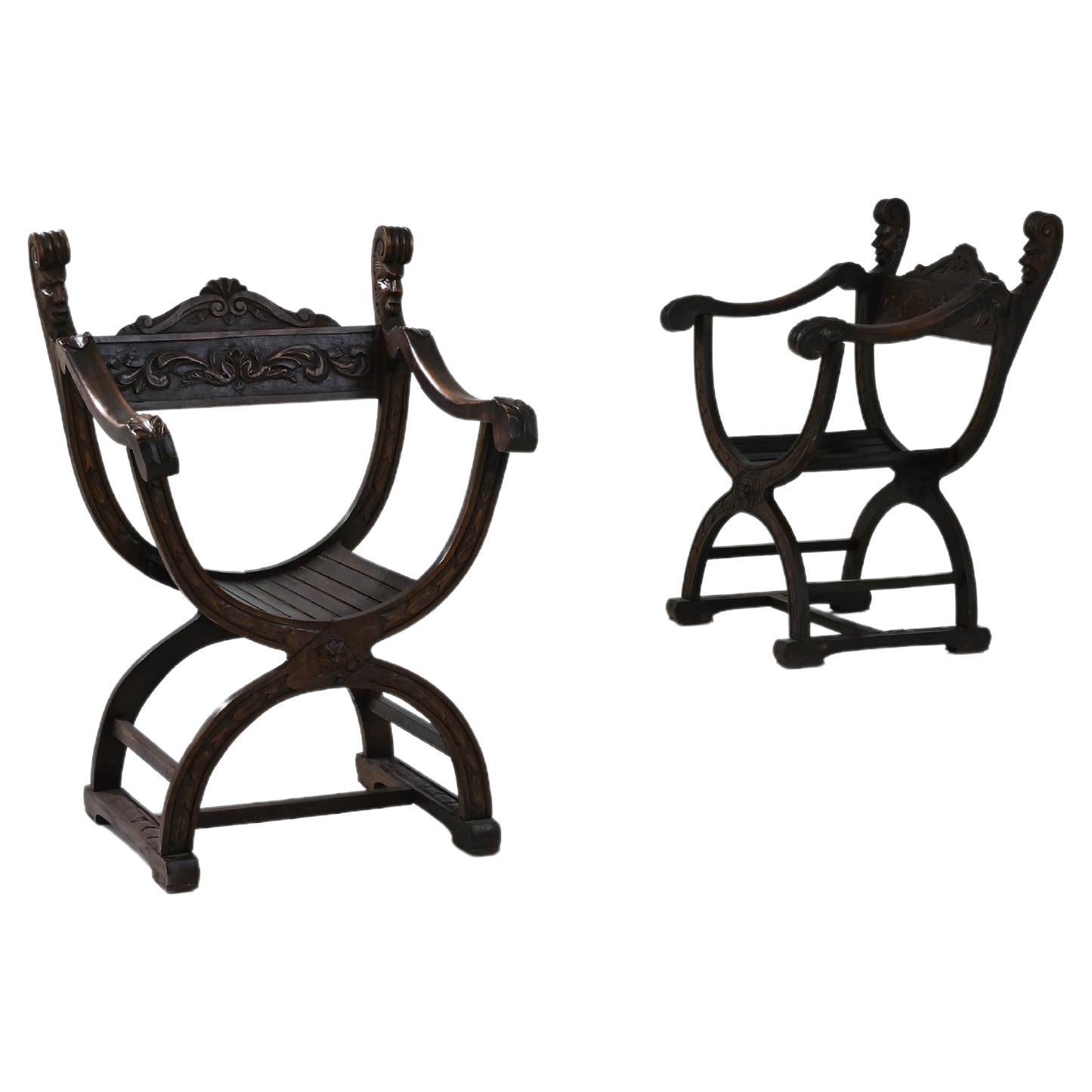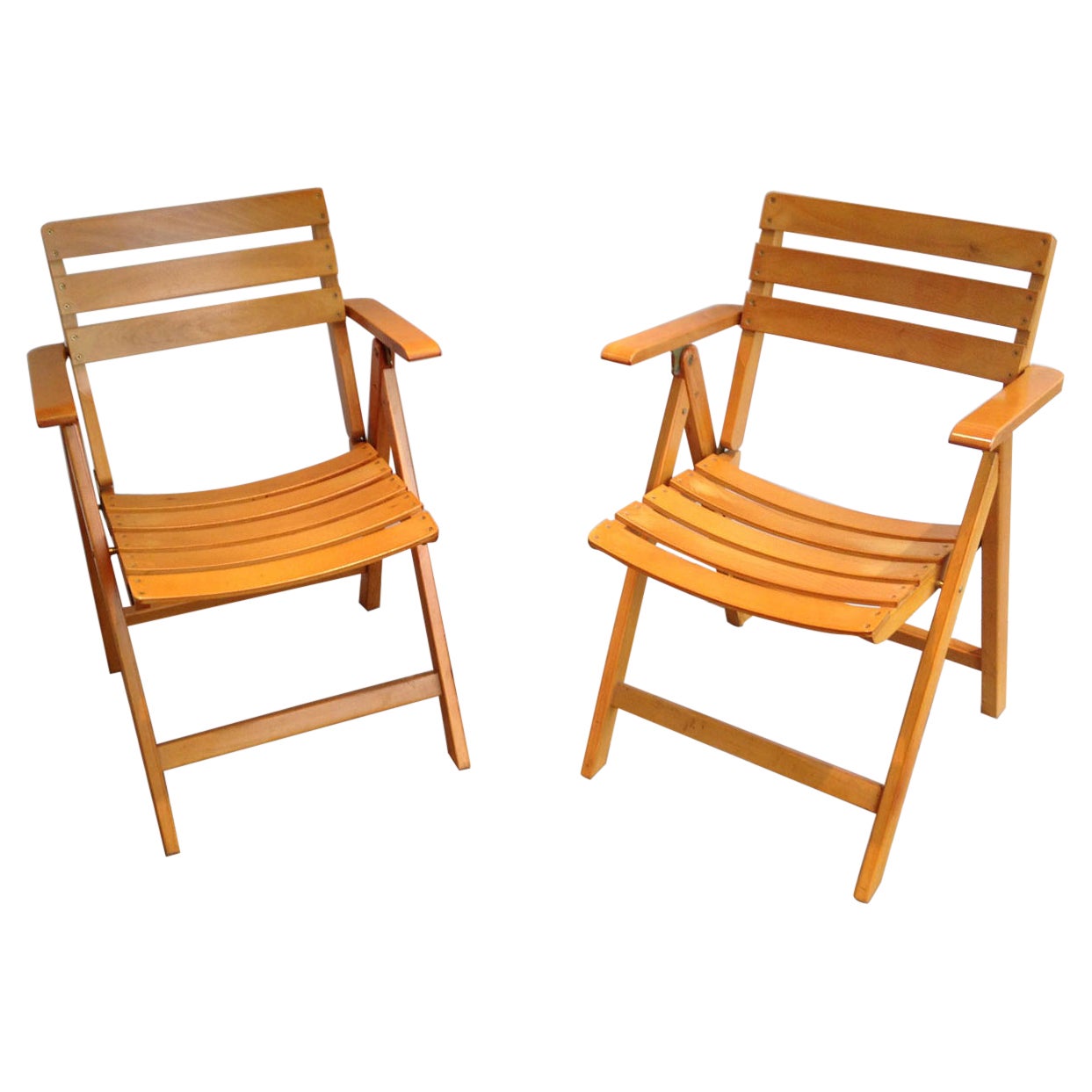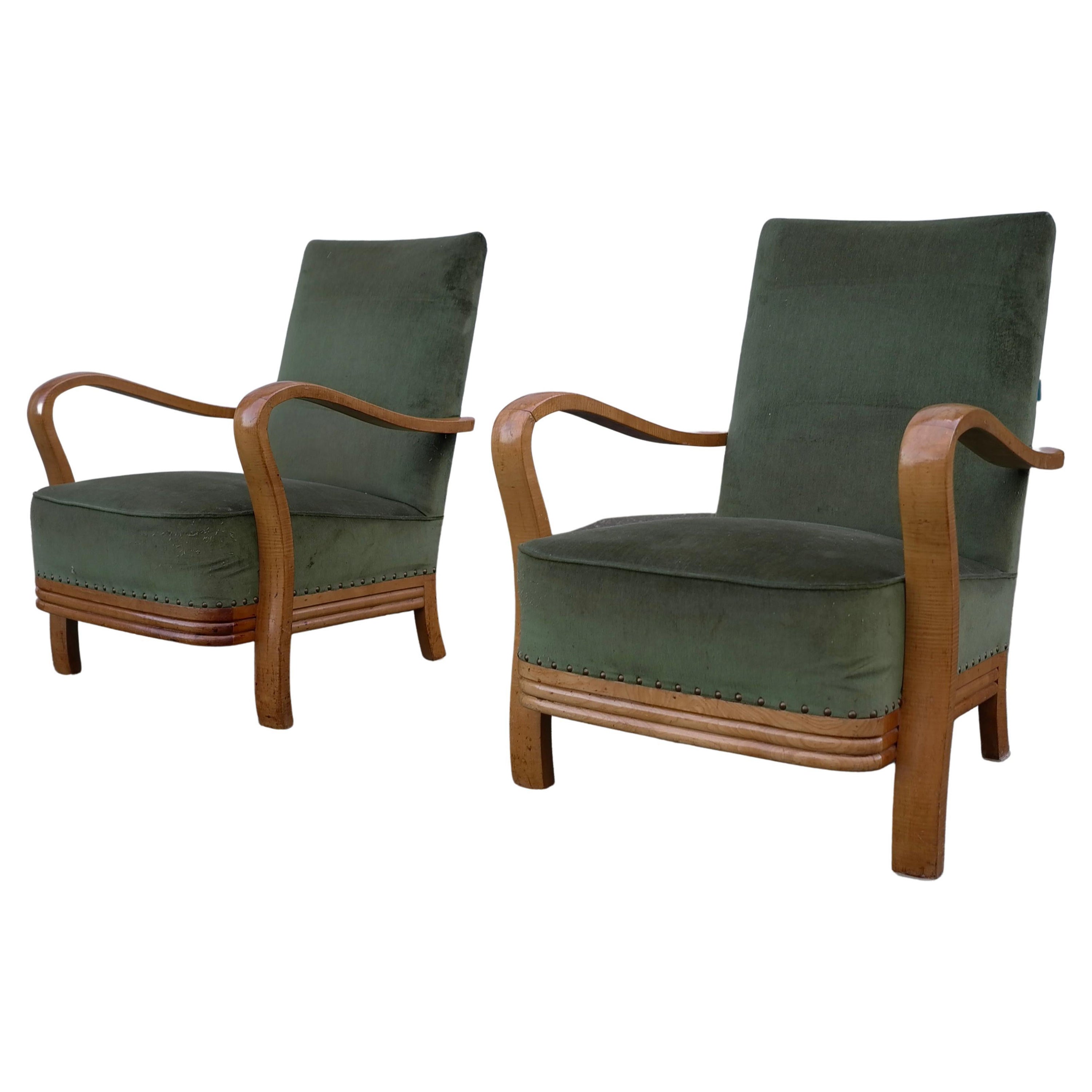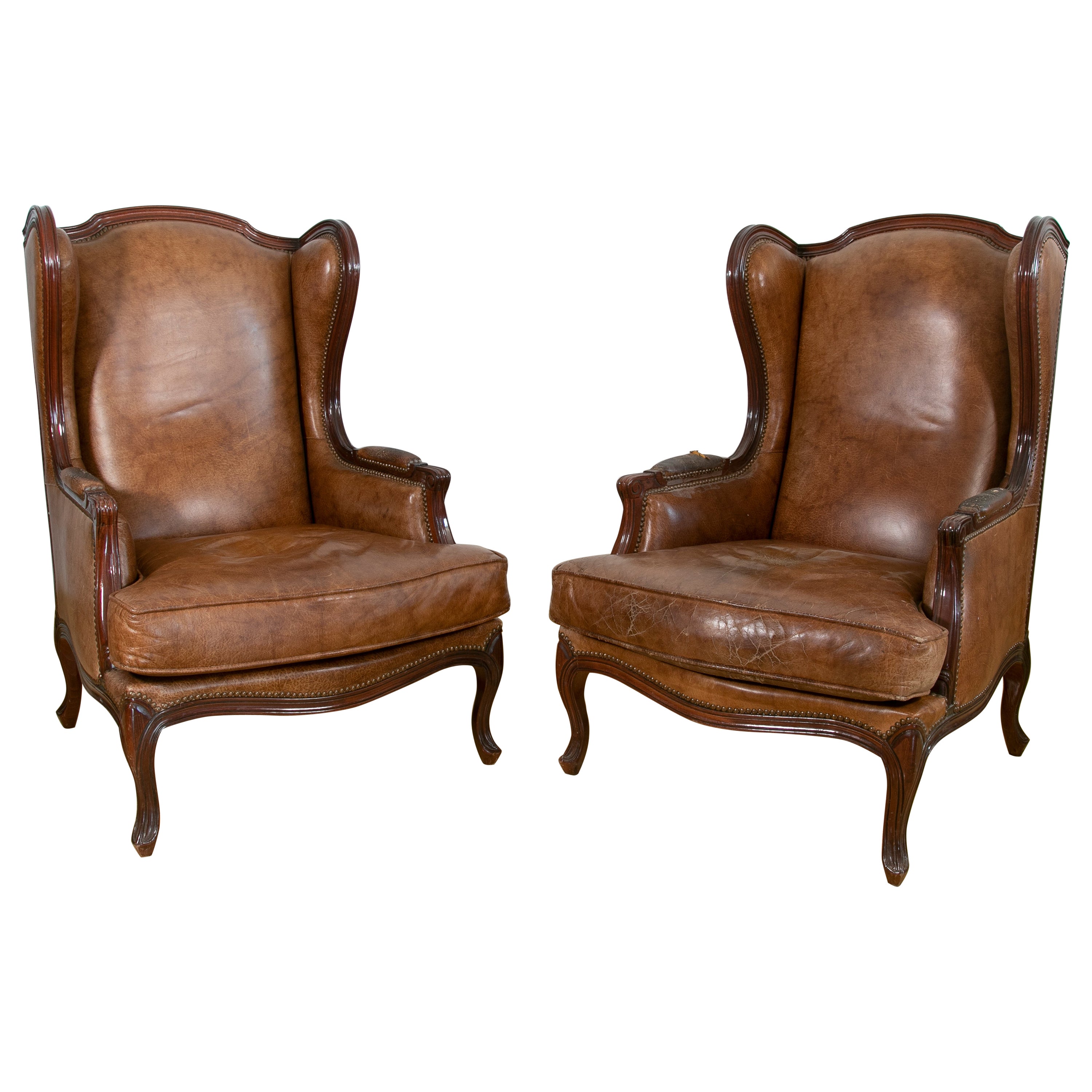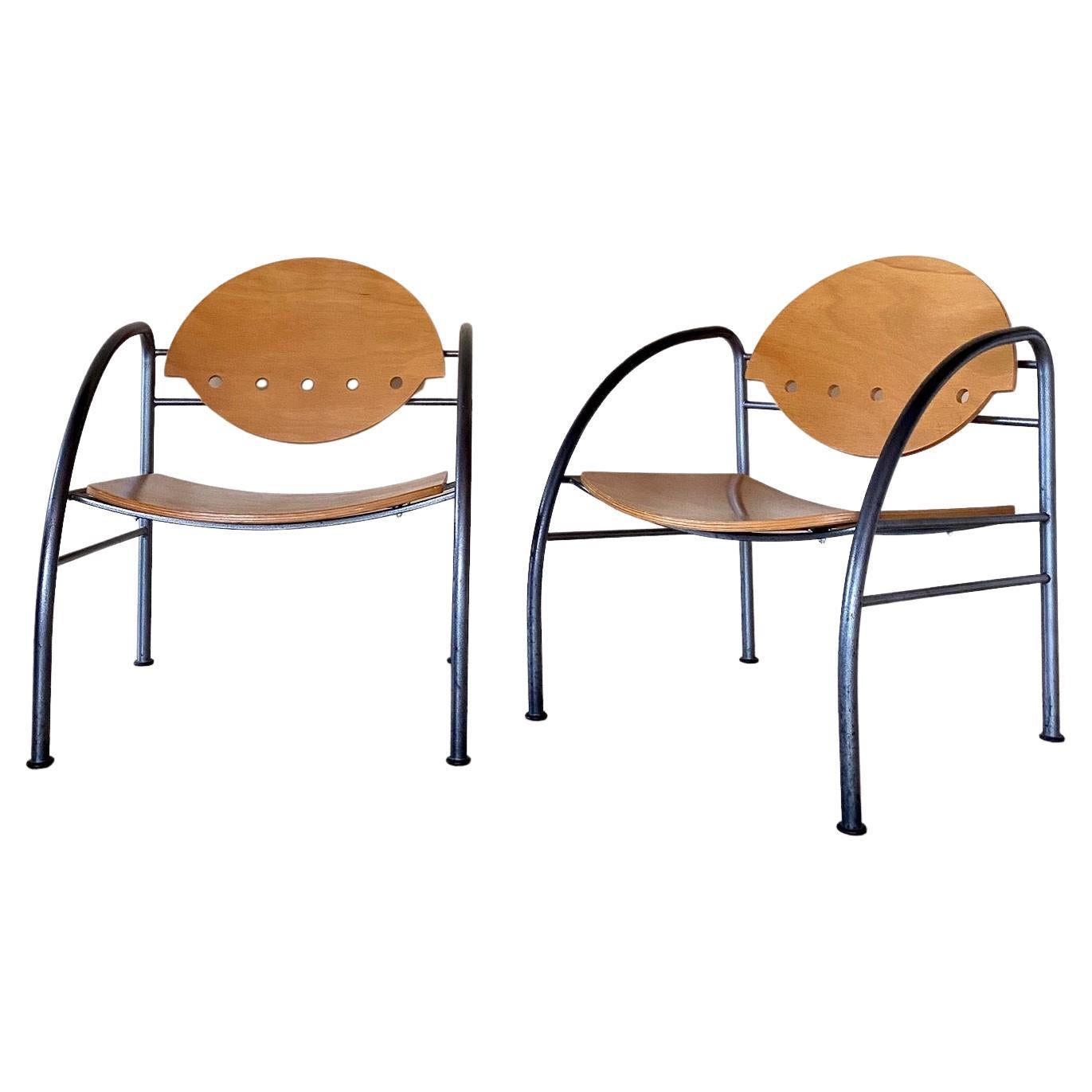Items Similar to Pair of large curved wooden armchairs - Belgian work, 1980/90
Want more images or videos?
Request additional images or videos from the seller
1 of 10
Pair of large curved wooden armchairs - Belgian work, 1980/90
About the Item
Beautiful curved grey wooden armchairs
Belgian work, 1980-90
painted in grey
74 x 73 x 79 cm
Very confortable and large armchairs.
- Dimensions:Height: 29.14 in (74 cm)Width: 28.75 in (73 cm)Depth: 31.11 in (79 cm)
- Style:Modern (Of the Period)
- Materials and Techniques:Wood,Polychromed
- Place of Origin:
- Period:1980-1989
- Date of Manufacture:1980
- Condition:Wear consistent with age and use.
- Seller Location:Bruxelles, BE
- Reference Number:1stDibs: LU6666236901962
About the Seller
5.0
Vetted Seller
These experienced sellers undergo a comprehensive evaluation by our team of in-house experts.
1stDibs seller since 2022
6 sales on 1stDibs
Typical response time: 7 hours
- ShippingRetrieving quote...Ships From: Bruxelles, Belgium
- Return PolicyA return for this item may be initiated within 3 days of delivery.
More From This SellerView All
- Pair of Wooden Chairs, Lombardy, 17th CenturyLocated in Bruxelles, BEPair of beautifully carved wooden chairs Lombardy, first half of 17th century H 86 x L 48 x P 43 cm Pair of “da balia” (nanny) chairs. The backrest is decorated with winged myt...Category
Antique 17th Century Italian Renaissance Chairs
MaterialsWood
- Pair of Chiseled CandlesticksLocated in Bruxelles, BEPair of chiseled candlesticks plated brass Germany, probably Nuremberg 17th century H 12 x (base diameter) 9,5 cm Very good conditions.Category
Antique 17th Century German Baroque Chandeliers and Pendants
MaterialsBrass
- Alfio Mongelli -"Scomposizione matematica"- ABC, 1980By Italian school XX ct.Located in Bruxelles, BEAlfio Mongelli (Rome 1939) Scomposizione Matematica - ABC 75,3 x 65,5 x 10 cm steel and wood 1980 Steel sculpture on wood; label indicating the title and the author at the bottom r...Category
Vintage 1980s Italian Modern Abstract Sculptures
MaterialsSteel
- Large Terracotta Relief - Lombardy, First Half of 17th CenturyLocated in Bruxelles, BELarge Terracotta relief of the flight into Egypt Lombardy, first half of 17th century Painted terracotta 91 x 85 x 11,5 cm This event in the early life of Christ is recounted i...Category
Antique 17th Century Italian Baroque Figurative Sculptures
MaterialsTerracotta
- renaissance wooden candelabrum and painted cross - Umbria, 16th centuryLocated in Bruxelles, BEBase of a carved wooden candelabrum, polychrome and gilded; cross painted on both sides. Umbria or Tuscany, 16th century 136 x 43,5 x 30 cm (The cross and the base of the candelabrum were later assembled) The base of the candelabrum is intricately carved and adorned with polychrome and gilded finishes. The shafts take on the shape of balusters reminiscent of ancient columns, feature ornate foliage decorations, garlands and winged cherub faces. The feet are crafted in the likeness of lion paws. The base is further embellished with depictions of four saint martyrs, among them Saint Barbara and Saint Catherine of Alexandria. The plasticity of the figures, outlined with strong contour lines, the clear and vibrant colors, are stylistic elements linked to the Umbrian tradition of the sixteenth century.The precisely defined and elegant drawing, along with the clear color palette applied with refined chiaroscuro modulations, became the signature of a style that would leave a lasting mark on the era to come. This is exemplified by a preference for vibrant, multicolored images, accentuated in this case by the use of red and pink in the saint's attire. A notable addition, introduced later, is a polylobed cross painted on both sides. On one side, the Crucifixion is vividly portrayed:The treatment of the corpus itself is in line with High Medieval practice, emphasizing pathos by showing Jesus dead, his arms sagging from the weight of the body. The upper section displaying a pelican pecks at her breast to feed her young with her own blood; a symbol of the sacrifice of Christ on the cross whose body and blood similarly nourishes the celebrant during Mass. The lower part depicts Golgotha. On the reverse side, the Resurrection is artistically presented in a Renaissance iconography, reminiscent of the renowned composition painted by Piero della Francesca, now housed in the Civic Museum of Sansepolcro. In terms of composition, with the frontal depiction of Christ holding the banner, this motif became particularly widespread in central Italy, spanning from Tuscany to Umbria throughout the 16th century.. The double-sided construction suggests that it may also have been carried in liturgical processions. In Umbria from the 14th century, the use of portable crosses painted on both sides had become a widespread practice, aimed at satisfying the monastic clientele that had significantly increased following the establishment of new religious communities. The earliest surviving Tuscan painted crucifix represent Christ as Christus Triumphans, or the “Triumphant Christ” with his head up and eyes open. This form was supplanted in the 13th century with the Christus Patiens, or “Suffering Christ” type who is shown often with his head fallen on his shoulder and his eyes closed, as In our cross. The iconography of the suffering Christ appears to have developed out of a new interest in Christ’s human nature, the development of the feast of Corpus Christi and with increased importance given to the Eucharist. The process of humanizing the figure of Christ reaches its peak with the abandonment of all the previous expressive conventions in favor of more realistic details we can observe in this Crucifix, such as the swollen belly, the arms stretched to the limit of muscle tearing, the body falling heavily forward, the abundant blood on the wounds, and the cross firmly embedded in the rock of Calvary. It's worth noting that Renaissance candelabra...Category
Antique 16th Century Italian Renaissance Figurative Sculptures
MaterialsWood, Giltwood
- Large Medieval inscriptionLocated in Bruxelles, BELarge Medieval German Inscription stone Germany, 14th century 46 x 83 x 13 cmCategory
Antique 15th Century and Earlier German Medieval Historical Memorabilia
MaterialsStone
You May Also Like
- 20th Century Belgian Wooden Armchair, a PairLocated in High Point, NCDiscover the understated grandeur of this pair of 20th Century Belgian wooden armchairs, a duo that exudes classical elegance and robust charm. The chairs are a symphony of dark, pol...Category
20th Century Belgian Armchairs
MaterialsWood
- Pair of Wooden Armchairs, French Work Signed Clairitex, Circa 1970By ClairitexLocated in Marcq-en-Barœul, Hauts-de-FranceThis pair of folding armchairs are made of vernished wwood. This is a French work signed Clairitex. Circa 1970.Category
Vintage 1970s French Mid-Century Modern Armchairs
MaterialsMetal
- Pair of Wooden Curved Arms Art-Deco Armchairs, France, 1940sBy Jean RoyèreLocated in Den Haag, NLPair of wooden curved arms art deco armchairs, France, 1940s.Category
Vintage 1940s French Mid-Century Modern Armchairs
MaterialsMohair, Bentwood
- 1980s English Pair of Wooden Armchairs Upholstered in LeatherLocated in Marbella, ES1980s English pair of wooden armchairs upholstered in leather.Category
Late 20th Century English Armchairs
MaterialsLeather, Wood
- Wooden and Steel Armchairs, 1980s, Set of 2Located in PARIS, FRPair of stylish postmodern armchairs in steel and wood. Italian work from the oeghties.Category
Vintage 1980s Armchairs
MaterialsMetal
- Pair of Vintage Armchairs, 1960's, BelgiumLocated in HEVERLEE, BEPair of mid century armchairs in red skai (leatherette) upholstery and black lacquered wooden armrests and legs. Nice striking red colour. Good original condition 1960s - Be...Category
Vintage 1960s Belgian Mid-Century Modern Armchairs
MaterialsFaux Leather, Wood
Recently Viewed
View AllMore Ways To Browse
Empire Tub Chair
Executive Caned Chair
French Crapaud Armchairs
Gargoyle Chair
How High The Moon Chair
Howdah Chair
Jorge Zalszupin Presidential
Karelian Birch Chair
Lc7 Armchair
Leopard Milo Chair
Maison Des Bambous
Pair Lolling Chairs
Simmons Chair
Teddy Bear Armchair
Vuelta 80
W H Gunlocke Chair
Walnut 20m Console Table
Wormley Captain
